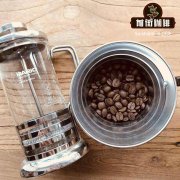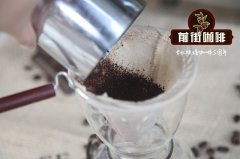Bolivian Coffee Perdo Rodriguez introduces the special flavor story of Bolivian coffee beans

Professional coffee knowledge exchange more coffee bean information please follow the coffee workshop (Wechat official account cafe_style)
When it comes to the Perdo Rodriguez of Bolivian coffee, it can be said that everyone in the boutique coffee industry knows it, and it can almost be said to be the flame of hope for the revival of Bolivian coffee. Not only are there many boutique coffee trend cards, such as intellectuals regularly grab beans every year, Japanese Maruyama Coffee representative Miki Suzuki won the championship in Japan using Rosa / Geisha of Pedro's manor, and won the runner-up in the 2017 World Championships.
Perdo Rodriguez manages the army strictly, the pursuit of coffee quality details is almost to the point of paranoia, social care and industrial revival is tireless, can be said to be a model figure in the boutique coffee industry.
They did some great things for coffee in Bolivia. They have their own factories that process and export coffee for farmers in the Caranarvi and Sud Yungas areas. The family has been buying coffee from small coffee producers for three decades, but the steady decline in coffee production threatens the sustainability of their export business. However, without the intervention of people like the Perdo Rodriguez family, the future of Bolivian coffee production is at risk of disappearing.
The family decided that they could make changes to make things better and meet the challenge of increasing coffee production in Bolivia by planting their own new coffee plantations.
In 2014, the Perdo Rodriguez family bought land in the Karanawi region to grow Bolivian coffee beans to demonstrate their practices and to educate other producers about sustainable agriculture and increase the total production of their factories. They prepared land on 20. 6 hectares and planted red Caturra, Java and geisha. The name of the farm is Las Alasitas, which means "buy me" in Aimara's mother tongue.
In addition, they have introduced a sustainable development model for manufacturers who supply products in factories, and have established this model in three texts: economic sustainability, social understanding and environmental awareness-SoldeMa ñ ana.
Finca Las Alasitas is a farm covering an area of 20.6 hectares, located 1550 meters above sea level in the Bolinda colony of Caranavi, Bolivia. Of these, 20 hectares are used to grow coffee.
Caranavi is located in the north of La Paz. It is 150 kilometers from the capital and is the center of coffee production in Bolivia. Its fertile soil and height make it possible for Bolivia to produce coffee with unique colors.
National Bolivia (Bolivia)
Caranavi in the producing area
Manor Alacita (Finca Las Alasitas)
Producer Pedro Rodriguez
100% hand-picked red cherries and elevated scaffolding in the sun
100% varieties of round beans
1600-1650 meters above sea level
Qianjie Coffee suggests grinding Bolivian coffee into small Fuji 3.5 and extracting it in three stages with water of about 90 degrees for about two minutes. Dry aromas can feel peach, wine, sweet strawberries, berries. The entrance can feel the rich aromas of mango, wine and passion fruit, with sweet aromas of peaches, berries and strawberries, floral aromas, solid and complex overall flavor.
Qianjie coffee: Guangzhou bakery, the store is small but a variety of beans, you can find a variety of unknown beans, but also provide online store services. Https://shop104210103.taobao.com
Important Notice :
前街咖啡 FrontStreet Coffee has moved to new addredd:
FrontStreet Coffee Address: 315,Donghua East Road,GuangZhou
Tel:020 38364473
- Prev

Burundian COE 4th Red Bourbon Coffee Baking suggestion _ Starbucks Burundian Coffee Bean
Professional coffee knowledge exchange more coffee bean information please follow coffee workshop (Wechat official account cafe_style) [country]: Burundi [production area]: Kayanza [manor]: Gahahe caha [variety]: red bourbon [treatment]: washing [altitude]: 1805 m [roasting degree]: City (cooked beans 230g) [flavor]: baked in light
- Next

Introduction of Burundian SEGEC Mpanga Pennjia Champion processing Plant _ difference between insolation and washing
Professional coffee knowledge exchange more coffee bean information please follow coffee workshop (Wechat official account cafe_style) Champion processing Plant SEGEC Mpanga Origin: Burundi production area: Cabuye District, Kayanza Province: Panenjia processing Plant varieties: bourbon treatment: African scaffolding Sun Flavor: dry fragrance with the freshness of cantaloupe and lemon peel and sweet strawberry sandwich
Related
- Detailed explanation of Jadeite planting Land in Panamanian Jadeite Manor introduction to the grading system of Jadeite competitive bidding, Red bid, Green bid and Rose Summer
- Story of Coffee planting in Brenka region of Costa Rica Stonehenge Manor anaerobic heavy honey treatment of flavor mouth
- What's on the barrel of Blue Mountain Coffee beans?
- Can American coffee also pull flowers? How to use hot American style to pull out a good-looking pattern?
- Can you make a cold extract with coffee beans? What is the right proportion for cold-extracted coffee formula?
- Indonesian PWN Gold Mandrine Coffee Origin Features Flavor How to Chong? Mandolin coffee is American.
- A brief introduction to the flavor characteristics of Brazilian yellow bourbon coffee beans
- What is the effect of different water quality on the flavor of cold-extracted coffee? What kind of water is best for brewing coffee?
- Why do you think of Rose Summer whenever you mention Panamanian coffee?
- Introduction to the characteristics of authentic blue mountain coffee bean producing areas? What is the CIB Coffee Authority in Jamaica?

